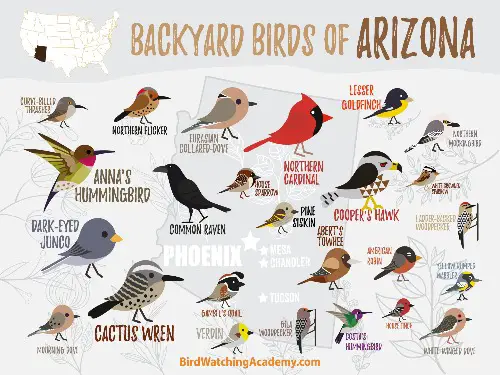Do you know how many bird species inhabit Arizona birding zones?
We found that this state has over 500 types of avians. Imagine that! It'll have a few species you've not seen in the east as some only live on the southwestern side of the continent.
Let's look at different birds of Arizona to give you an idea of the experience awaiting you in the southwestern state.
Arizona Birds That Make It A Great Bird Watching State
Are you ready with a journal and a map? Let's discover birds in Arizona. Not all 500+, but a few of this state's avian variety.
1. Mourning Dove
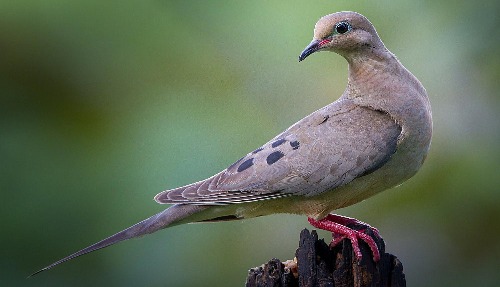
The best way to describe a mourning dove is a graceful bird with a slender tail and a small head. If you don't see it perched on a telephone wire, you'll see it foraging on the ground. You'll hear a whistling sound from its wings as it flies fast and straight.
It's a resident bird in North America, even though it's one of the most hunted doves.
The mourning doves in the breeding range north fly south to Mexico. The birds in Arizona and other parts of the U.S. may move a few miles or stay.
So we're talking about a species between 9.1 and 13.4 inches long with a spotted gray back, peach belly, and pink legs. Its back differentiates it from a white-winged dove.
A mourning dove lives in many habitats, except woodlands. Its diet consists of seeds, berries, weeds, and herbs. You could also test-feed this bird to the best bird seed brand on the market specifically formulated for a mourning dove.
You'll also see its relative, the Eurasian collared dove.
2. Cactus Wren
Unlike the species above that'll see throughout the state, a cactus wren is one of the southern birds. Fortunately, it has a resident population you can see any time of the year.
Other birds build nests during the breeding season, but a cactus wren is so extra that it also weaves them in the nonbreeding season to use them as roosting sites. Even juveniles take up this task early by watching their parents, though they eventually build theirs over 60 days after the nestling period.
Though this bird sounds like it's preoccupied with its housing plans, it sometimes becomes aggressive and destroys nests of verdins even when they have eggs in them. So how do you know there's a cactus wren near you?
Look for a bird with eye-catching brown speckles and white eyebrows from the bill to its neck. The flanks have pale cinnamon feathers, and this bird, which is Arizona's state bird, can grow 8.7 inches long.
3. Gila Woodpecker
It's another southern bird with a resident population. A Gila woodpecker will have you exploring deserts with almost no trees except tree-like cacti called saguaro.
It digs out a nest in midwinter, mostly in saguaro cactus, but it can also consider cottonwood, willow, or oak. When the nestlings leave, other birds like the cactus wren and elf owl take over the nest.
A Gila woodpecker is between 8.7 and 9.4 inches long, has white and black bars on its back, plus a tan head that matches its belly. The male has a red patch on its crown.
The male is so defensive of its territory during the breeding season that it attacks other birds like the house finch, European starling, and cactus wren.
Pro Tip: You could prevent other birds from invading its territory by finding the best bird houses for sale and installing them strategically inside your backyard.
4. Northern Cardinal
Crests are among the best Arizona birds identification features. On that note, a northern cardinal has a distinct crest in both sexes - a red crest on the male or a brownish one on the female.
You'll see it in southeast Arizona only.
Were you planning on birding there? Since it's a backyard visitor, you only need to scatter sunflower seeds in your yard to see a northern cardinal. But, if you don't have a home and are only visiting this state, a birding tour of Madera Canyon may grant you sightings of this species.
Pro Tip: You could also try feeding them no waste bird seed and see if they will return for a second trip to your backyard!
It moves in pairs in the breeding season and joins a flock the rest of the year. Sometimes, you may spot cardinals foraging among dark-eyed juncos, titmice, and goldfinches.
You'll know there's a northern cardinal in the flock when you see a crested male with a red body, a black mask, plus a black throat. On the other hand, a female has a brown body with red tinges on the back and crest. It's larger than a house sparrow.
5. Northern Mockingbird
It's a resident species in North America, one of the most common backyard visitors in the U.S.
The female sings when establishing a wintering territory or when the male is away. The rest of the time, you'll most likely hear the male singing its spring or fall songs out of its collection of about 200 songs. The unmated males don't mind keeping you awake at night with their songs.
Beyond songs, you may also notice a northern mockingbird walking or hopping in your yard. It's the medium-sized species that come to your backyard often. It has a long tail, a gray back with white wing bars, and a whitish underside.
6. Great Horned Owl
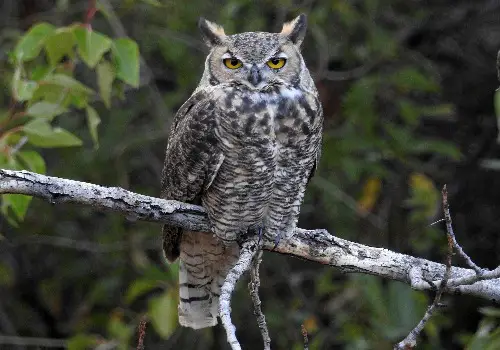
Arizona has 13 of the 19 owl species found in North America.
You'll see the great horned owl in many habitats, from deserts to grasslands and wetlands. It's also a backyard visitor. That's because a great horned owl is common throughout North America, the southern parts of Central America, and many areas of South America.
If there's a pair in your backyard during the breeding season, you can set up a nest box for it. However, remember this raptor attacks falcons and other owls. Imagine what it'll do to doves and starlings.
It's a large avian with yellow eyes, large ear tufts, and a gray to cinnamon facial disc. This predator measures 18.1 to 24.8 inches long.
7. Acorn Woodpecker
Armed with Birds of Arizona Field Guide by Stan Tekiela, it's time to look for the acorn woodpecker in the oak woodlands of eastern Arizona.
This population doesn't migrate, but the one in southeastern Arizona flies to Mexico in winter as its acorn granaries can't sustain it.
It lives in groups, often teaming up to jam acorns into tree holes. A group can drill up to 50,000 holes in one tree and fill them with acorns.
An acorn's breeding behavior is also a community effort with nestlings of different pairs raised in the same nest. The community grows with every brood as juveniles stick around to help raise nestlings. Other species like the elf owl may take over an abandoned nest.
An acorn woodpecker may explore a backyard near oak woodlands. It'll stay if the bird feeder has seed and suet.
It's larger than a house sparrow, and you'll know it by its red cap, whitish forehead, black back, and white rump. A female has a black cap plus a red patch on the back of the head.
8. Spotted Owl
There are three subspecies, and the ones in Arizona are the Mexican spotted owls scattered in the eastern and northern areas of the state.
This subspecies doesn't have ear tufts, and it's paler than others. It has a whiter facial disk, and the white spots on its breast and back are larger.
A spotted owl hunts at night, and you may spot it perched on a tree watching squirrels and woodrats. It prefers pine-oak and mixed conifer forests.
9. Lesser Goldfinch
Arizona is in the breeding and resident zones of the lesser goldfinch. The birds in Nevada and adjacent states fly away in winter, but it's not clear where they go.
This avian may accompany the American goldfinch, white-crowned sparrow, or the pine siskin to enjoy the seed rations in your backyard. It'll stay if you have hulled seeds or nyjer thistle.
Its black cap stands out when it's in a flock of other finches. Another way to ID it is by its yellow belly, white wing patches, and black or dull green plumage on its back. A female has an olive back and a dull yellow underside.
10. Burrowing Owl
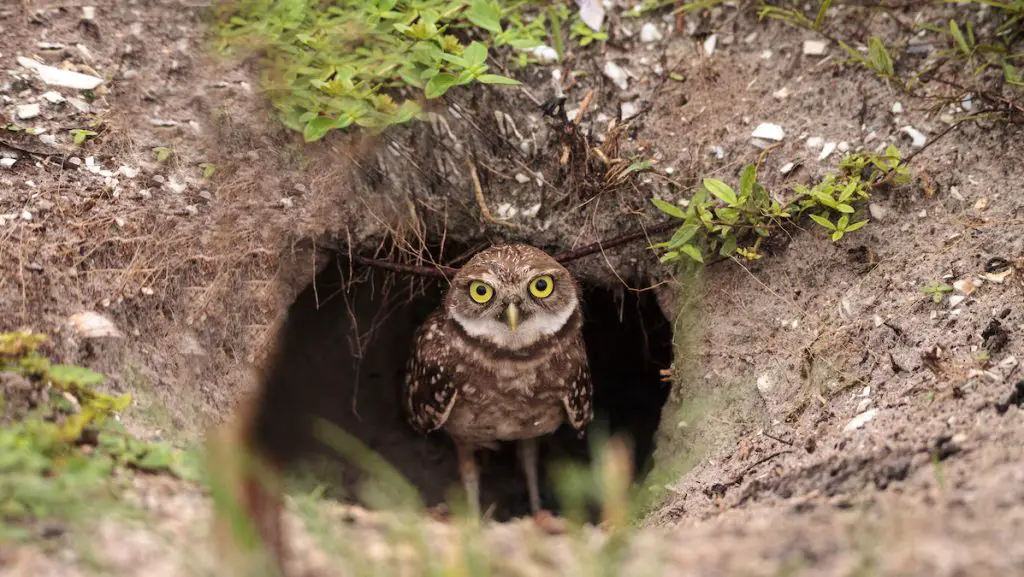
Southeastern Arizona hosts the resident population, while the northern area is the breeding range of the migratory avians.
If you didn't know there are small owls, this one is even smaller than an American robin because it measures 7.5 to 9.8 inches long. It's the size of a European starling.
As its name tells us, it burrows. Sometimes, it takes over the holes dug by a tortoise or a prairie dog. It can store hundreds of rodents there for the breeding season.
One stunning feature that'll help you ID it is its long legs. If you're lucky to lock eyes with one, you'll notice its yellow eyes and bill. It has mottled brown and white plumage.
A burrowing owl lives in diverse habitats, from grasslands to deserts, such as the Sonoran Desert. If it's not hunting an insect, it's running after a rodent. Also, if there are no animals to burrow holes for this avian, it may nest even on a pile of PVC pipes.
11. Black-Chinned Hummingbird
You'll only see it in the western states, and Arizona is one of those places. For instance, go birding in Desert Botanical Gardens.
Unlike other hummingbirds with colorful, flashy throats, this one has an iridescent purple throat and a grayish body. A female has a metallic green back though in a dull shade.
You'll spot a black-chinned hummingbird perched on a bare branch in many habitats, from deserts to urban areas and mountain forests.
Sightings are common along rivers in southern Arizona. It's an elusive species, often weaving through shrubs and insect swarms before going back to its perch.
If it comes to a backyard, it'll be looking for the signature food of hummingbirds - nectar. It doesn't stay at a feeder longer than a day during the migration, even when there's scarce food.
12. Song Sparrow
The birds in Alaska and Canada winter in the southern U.S. states and Mexico. However, birds in northern U.S states are resident birds that rarely migrate.
The streaked avian in your backyard, shrubby, or wetland is most likely a sparrow. The male is always singing from a perch on an exposed branch about eye level. You may also see a song sparrow on a wetland edge.
The sparrows in the southwestern states are paler than those in the Pacific Northwest. But overall, a song sparrow has a round head and tail, a mustache stripe, and coarse streaking on its breast.
It's small, measuring 4.7 to 6.7 inches long.
13. Hairy Woodpecker
If you're in southwestern Arizona, you may not see a hairy woodpecker as it inhabits the other sides of the state.
Nevertheless, let's talk about it in readiness for birding beyond your neighborhood. It's larger than a downy by a few inches, and its bill is also longer. The first place to search for hairy woodpeckers is a backyard feeder with suet or sunflower seed. If it doesn't show up, look for it in woodlots and forests.
It'll be the avian on a trunk or branch of a large tree, showing off its black wings with white spots and a red nape for male birds.
14. Black Phoebe
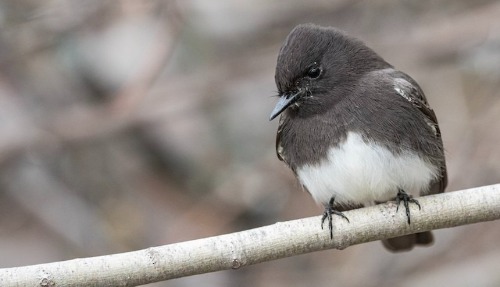
Though the resident population rarely migrates, others breed in northern Arizona and winter south.
Search for this flycatcher near water or human settlements, perched in the open. You'll know it's black phoebe if it has a sooty gray body, a white belly, and rhythmic tail pumping.
Black phoebe is larger than an American goldfinch by a few inches. It's not a backyard bird, but you can entice it with mealworms or an environment with insects.
15. Northern Flicker
You have to visit the northern area since northern flickers don't live in southern Arizona. It's one of the most colorful Arizona birds; therefore, a short tour to the north will be fulfilling.
There are two types of northern flickers. The western birds are red-shafted northern flickers, while the eastern ones have a yellow shaft.
Unlike other woodpeckers always on tree trunks and branches, the northern flicker prefers the ground. But that's okay as it digs out ants and beetles. You'll see it foraging in open woods and forest edges.
16. Turkey Vulture
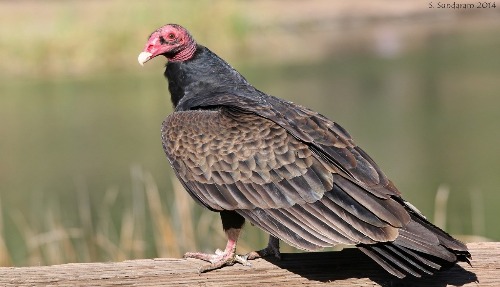
This raptor measures between 25.2 and 31.9 inches long, so it's a few inches smaller than a golden eagle, also found in Arizona.
Arizona has a resident range of the turkey vulture. You'd expect it to soar, but it glides low to the ground alone or in a small group.
You may also spot groups around dumpsters, construction sites, farms, or roosting on posts on the roadside. Its black plumage reveals gray flight feathers and tail as it flies. You'll also see a naked redhead and a pale bill.
17. Canyon Towhee
You're likely to see a canyon towhee in southeast and western areas of Arizona.
A canyon towhee has a long tail that gives it a body length of almost 10 inches from bill to tail. Its brown, unstreaked plumage blends into shrubs and scrubs as it forages on the ground.
It's also a backyard visitor always eager to enjoy millet, milo, and black-oil sunflower seeds from a platform feeder.
This desert bird nests when there's sufficient food, nesting material, and water. It's one of the species to see at Cave Creek Ranch.
18. Western Tanager
A tanager's plumage resembles the feathers of an American goldfinch. Nonetheless, a breeding male has an orange-red head from a pigment in the insects it eats. A female has a yellowish body instead of a black back and yellow belly like a male tanager.
This long-distance migrant has a breeding and migratory range in Arizona.
Sightings are in woodlands, more so in evergreen forests where tanagers hide in the canopy. Lastly, a western tanager prefers fresh oranges or dried fruits instead of seeds.
19. Mexican Jay

The Mexican jays in Arizona have pale feathers. Its blue and gray plumage resembles a scrub jay.
Its range is the southwestern states, including southeast Arizona. It can hide up to 7,000 acorns in a year, and it lives in a group of jays throughout, often sharing the nestling role.
You'll spot these jays in mixed woodlands with pine, oaks, and junipers. Its alarm call alerts the northern flicker when there's a predator nearby. That's why flickers are always following these jays.
Frequently Asked Questions
What birds live in the Arizona desert?
Birds of the Arizona desert include falcons, hummingbirds, hawks, and owls. For instance, the Sonoran Desert is home to species like the gilded flicker, northern mockingbird, cactus wren, and rock wren. You'll even see rare species like the whiskered screech owl in Ramsey Canyon Preserve.
What birds are common in Phoenix?
You'll come across burrowing owls, American coots, Anna's hummingbirds, black phoebes, Gila woodpeckers, and white-winged doves, among others. It's an avian-wealthy city thanks to its variety of birding sites like Rio Salado Habitat Restoration Area and Desert Botanical Garden.
One birding location that'll show you the avian wealth of Phoenix is the Gilbert Water Ranch. From Sonoran Desert species to migratory avians, the fishing lake and recharge ponds create an avian paradise with over 270 species.
Can I shoot a woodpecker in Arizona?
No, it's illegal to shoot woodpeckers as they are migratory birds protected under federal and state laws. These laws state it's illegal to capture, kill or possess a migratory bird.
If woodpeckers are a menace, use other methods like padding or netting to prevent access to trees. Silhouettes of hawks or owls can also scare them. When all else fails, frighten them with noise.
Conclusion
As we mentioned, Arizona has hundreds of species. You can start with a list of owls you want to see, then jump to woodpeckers or hummingbirds. Maybe, you can even start with the red birds and later focus on sightings of black and orange avians.
Some will have you exploring canyons and deserts, and others will fly to your backyard so you can watch them from your deck. In short, there's a lot to do in Arizona State with a diverse ecosystem.

